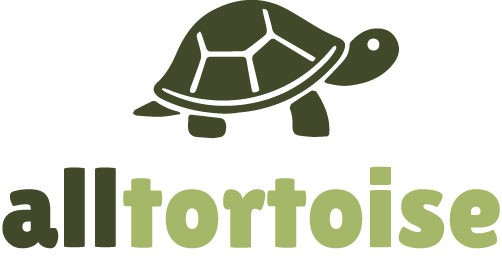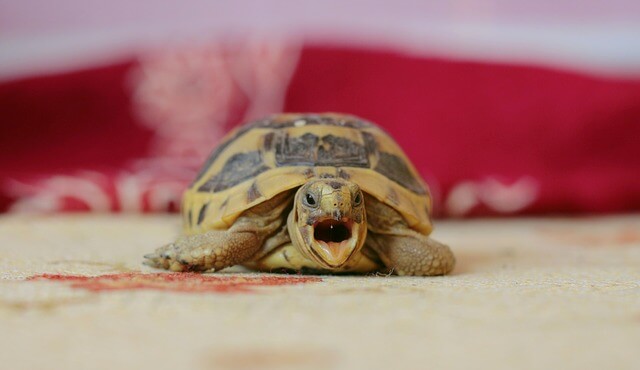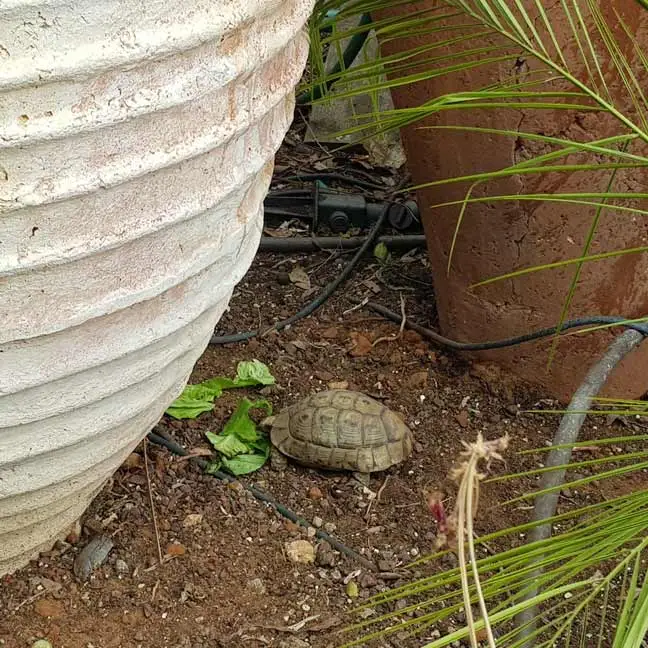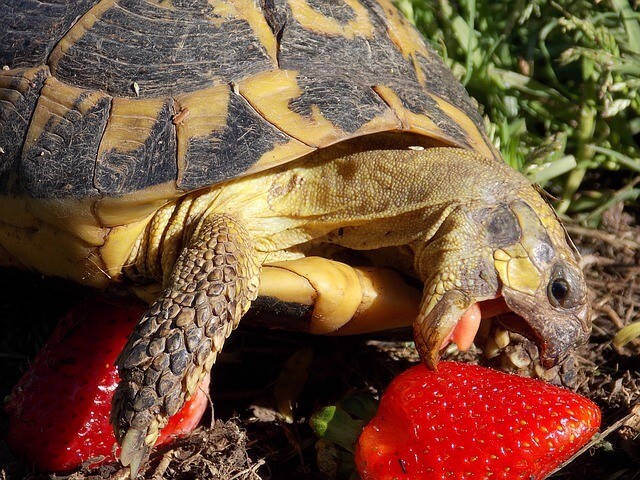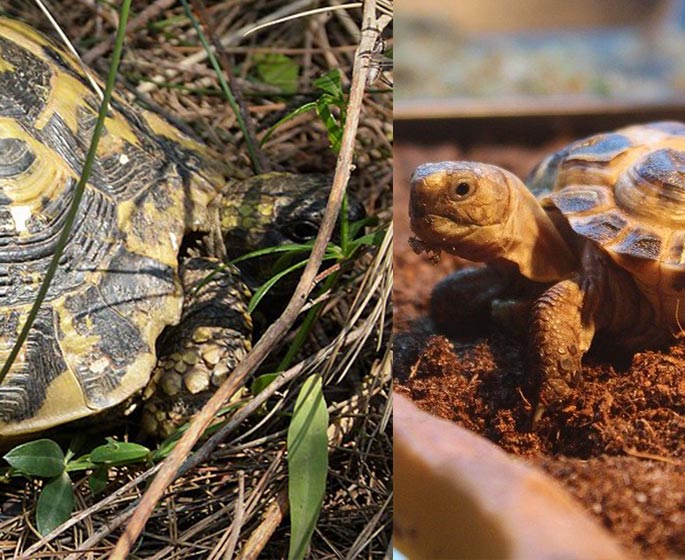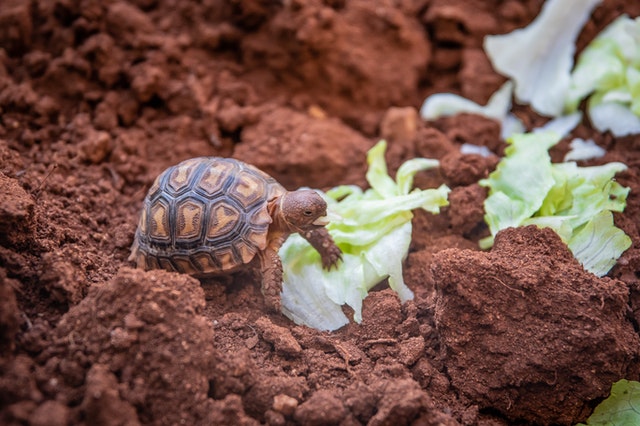Russian tortoises are some of the most adorable creatures on Earth. They’re also a fairly rare type of tortoise. Unfortunately, there’s not a whole lot of information available about them, from their growth cycle to diet, so it’s tough to know exactly how to take care of them… until now.
What is the rule of enclosure? It’s that you must understand that Russian tortoises are almost impossible to find in nature, and they are among one of the most expensive tortoise species. It is not unusual to find a Russian tortoise on the sale with a price tag of over 100 USD. So, after purchasing a Russian tortoise, you must take into account that you will have to provide it with a separate living space. Otherwise, it will be a disaster for the Russian tortoise.
We have to admit that the Russian tortoise enclosure is one of the most intriguing and mysterious ones. And unlike the American tortoise, the Russian one is not captive but free and wild. And this fact makes the whole situation more interesting.
Understanding Russian Tortoise Enclosure
A Russian tortoise enclosure is a small area where you keep a Russian tortoise (any species of the genus Testudo or the subgenus Testudina). They are tortoises that are native to Russia. This species is the largest tortoise in the world and the largest living reptile in the world. This tortoise can reach a length of 8-10 inches and can weigh between 80-130 pounds. They are found in forests, steppes, and scrublands. They are mostly nocturnal, and due to their rather large size and the fact that they are nocturnal, they are well adapted to living underground.
The Russian tortoise is a lovable, slow-moving tortoise that looks like a miniature turtle. These tortoises can be found in Russia and parts of Europe. The Russian tortoise has a shell that is domed, and its head is normally larger than the rest of its body. Enclosures are a great way to provide your pet with a sense of safety and security. They also provide an opportunity to engage and interact with them on a daily basis. The Russian tortoise is no exception. Many owners prefer to build their own enclosures in order to create the perfect living quarters.
Here are the 10 best Russian enclosure videos
- Setting up a Russian Tortoise Enclosure by Shelled reptiles
- Russian Tortoise Enclosure and care by aquariumlover1
3. Russian Tortise enclosure by RussianTorts
- How to set up an enclosure for a Russian tortoise by Zamzows Superstore
- Russian Tortoise Enclosure Set-Up by Shelled reptiles
- Setting up the ideal tortoise enclosure by RussianTorts
- Best Russian Tortoise Advice Kamp Kenan S3 Episode 15 by Kamp Kenan
>
- Indoor enclosure for Russian Tortoise by Kamp Kenan Army
- Russian Tortoise outdoor enclosure by RussianTorts
- Rescuing $1000 Adult Russian Tortoise! by FishVisions
For years, the Russian tortoise has been popular as a pet. However, it’s also been a great source of scientific research, as in the past, many people helped protect the species from extinction. Many people have also learned about biology and genetics because of the tortoise. Watching your pet when they are in an enclosure is important for their safety, as well as for your own. However, to get the most out of your pet’s enclosure, you need to choose the right enclosure. Cage too small and they will not be able to perform all of their natural behaviors, too large and they will feel cramped and unhappy.
Enclosures may seem like an unnecessary nuisance, but in reality, they are critical to the health and well-being of your Russian tortoise. This guide will discuss the 3 most important points that every owner of an enclosure needs to know, including how to build a safe and secure enclosure, provide a feeding regimen correctly, and maintain proper temperatures for your Russian tortoise. Russian tortoises are one of the oldest tortoise species and one of the most popular among breeders and enthusiasts. They are not only beautiful, but they also provide many benefits to people who keep them.
Importance of Russian Tortoise Enclosure
In most species of animals, females are much smaller than males. In tortoises, however, the opposite is true. Under the law of nature, females are much smaller than males. And it is true for all species of tortoises. There are two species of tortoises in the world: the Western (tortoise) and the Indian (tortoise). Enclosures of Russian tortoises are not just used for keeping the animals in. They are also used for maintaining their health.
The Russian tortoise (Testudo graeca) is a large species of tortoise native to Europe and Asia. They are excellent hibernators and can be found in a wide range of habitats, including woodland, grassland, and semi-desert. The Russian tortoise is a large species of tortoise native to Europe and Asia. They are excellent hibernators and can be found in a wide range of habitats, including woodland, grassland, and semi-desert.
Things to consider in the Russian Tortoise enclosure
Russian Tortoise Enclosure is a specially designed cage with a high-security level and is used by Russian tortoises (and other reptiles) as a home. It is a cage that will protect the tortoises from predators and other species and also provides a warm and dry place to hibernate during the winter months. Russian tortoises are famous for their longevity and hardiness. During their lifetime, tortoises can live for 100-150 years and reach a size of over 2 feet. They are also very resistant to disease and parasites and are known to have a high resistance to the effects of heat and humidity.
Russian tortoises are a popular pet, both because they are fun to watch and because they are so durable. They are slow to mature, but they live a long time. The first few years of life are spent in a burrow, but as a tortoise gets bigger, it will eat less and less and start living in a larger enclosure. Once a tortoise is full-grown, it is possible to have multiple male tortoises in the same enclosure and still reproduce successfully. Russian tortoises are interesting animals that have a lot of potentials to be enjoyed by their owners. They enjoy looking at the world from a different perspective, for which they have developed a different method of perception. Their shell gives them a giant arm that is useful for climbing and is also used for other kinds of activities.
Here are other things to consider:
-
Size of the Tortoise Enclosure
As pet owners, we sometimes get caught up in the excitement of a new baby tortoise or the challenges of altering the size of our Russian tortoise enclosure. A Russian tortoise enclosure is not much different from those of other tortoise species. It consists of a box, which is big enough for the tortoise to move about in, and wall supports for the enclosure.
-
The substrate of the Tortoise enclosure
Russian tortoises are very active reptiles and prefer basking locations, which must be heated. Often finding basking areas indoors is not a problem. They are omnivores so they will eat insects and a variety of other foods. They are also very social and love to interact with people. Living in groups of two to four is the ideal size. They tend to be very curious and can easily be taught tricks. If you are an owner of a Russian tortoise, you’ll want to know what substrate to use in your enclosure to give it the best chance of thriving (and to avoid problems with your tortoise).
-
Lighting for a tortoise enclosure
If you have a large enclosure for your tortoise, you may wonder about the best way to light the enclosure. It’s important that the tortoise has enough places to hide. If you don’t provide them with enough places to hide, your tortoise will hide under his food dish or the enclosure (or, in extreme cases, climb out of the enclosure walls). “Hiding” among the tortoise’s surroundings is natural, but this may lead to a lack of activity and a higher chance that predators will predate the tortoise. It’s that time of the year again… time for you to get your tortoise ready for hibernation. In the off-season, you need to get your tortoise used to going into its hibernation box. The easiest way to do this is to put the tortoise in its enclosure once the lights go out. After a while, you will know the exact point at which your tortoise is ready to go into hibernation.
It’s crucial to know your tortoise’s needs when designing an enclosure. As a general rule, the longer the tortoise’s shell, the bigger the enclosure. This can be more challenging for tortoises that are smaller than the average species, such as the Russian tortoises. With the Russian tortoise’s average size of 3.5 inches (8 cm), creating a roomy environment that is large enough to fit the tortoise comfortably is not easy. However, the best way to make sure they have enough room is to set up the enclosure in a way that allows the tortoise to have a view of the world outside without it getting too close.
What do you think about domestic turtle enclosures? Maybe you’ve looked around and found that they’re expensive and not very attractive. If so, you’re not alone. Turtle owners often have a hard time coming up with the funds to put a habitat together. It’s not unusual to see people selling used boxes or old aquariums. A lot of people are also hesitant to buy a shell because they’re not sure what it’s like to live in a tortoise’s shell. Turtle owners get a bad reputation as houseplants because of these animals’ environment.
